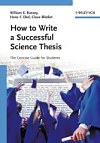Search engines are not biased toward popular and highly linked websites, researchers report, in this week’s PNAS.
The internet is enormous, vast, gigantic, big and complex, search engines have taken on an increased role in guiding users to their destinations (community forums and blogs aside). But there are concerns that search engines, by means of their subjective ranking algorithms, could be creating positive feedback loops wherein popular sites that receive the most hits become more popular and so on. Eventually, this cycle shouldresult in a small subset of websites monopolizing a majority of traffic.
However, according to Santo Fortunato, Alessandro Flammini, Filippo Menczer, and Alessandro Vespignani this doesn’t actually happen. They collected data from various search engines and found that the popularity bias of search engines was weak. Search engines were found to direct less traffic to popular websites compared with a scenario where there were no search engines and all traffic was generated by web surfing.
The key reason for this apparent lack in search engine bias, the researchers note, is the wide diversity and specificity of information sought by internet users, which mitigates the ranking bias of the engine and creates balanced results. “We reconcile theoretical arguments with empirical evidence showing that the combination of retrieval by search engines and search behavior by users mitigates the attraction of popular pages, directing more traffic toward less popular sites, even in comparison to what would be expected from users randomly surfing the Web,” says the team.
So, where does this leave those seeking to tweak their position in the SERPs (search engine results pages) through SEO (search engine optimization) techniques? Your answers are most welcome…
You can read the preprint paper here and at PNAS (once it’s published) here


